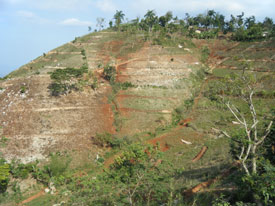 Arbor day brings mixed feelings for me, which may sound strange because who doesn’t like trees? Having worked some time as a restoration ecologist, I may be privy to the dark secrets of habitat restoration or ‘enhancement’, that many well-meaning charities and non-profits may be unaware of: Nature heals itself! Be sure you look into where your trees are being planted this Arbor Day, here is what to look for:
Arbor day brings mixed feelings for me, which may sound strange because who doesn’t like trees? Having worked some time as a restoration ecologist, I may be privy to the dark secrets of habitat restoration or ‘enhancement’, that many well-meaning charities and non-profits may be unaware of: Nature heals itself! Be sure you look into where your trees are being planted this Arbor Day, here is what to look for:
Restoration of Existing Habitat – BAD
I have seen many groups attempting to restore National Parks, and wildlands after natural disasters such as fires, landslides and the like, which just makes me cringe. If the area is within a protected habitat and has just been devastated by a natural disaster, the best thing you can do is leave it alone. A restoration attempt in these areas will only introduce non-native and invasive species (usually carried in by the restoration crews in their shoes, clothes, automobiles and equipment). It can further disturb and disrupt the natural environment, causing more damage and long-term affects.
Restoration of Human-Impacted Habitat – GOOD
What is in need of restoration, are the habitats degraded by human activity such as farming, grazing and building. These areas have usually been so disturbed, damaged, or inundated with invasive species that it is unable to recover on its own. Fallow fields, urban lots, intensive agriculture and pastures are all good examples. Restoration is a difficult task and requires seeds from a local population, enough diversity to provide a natural habitat, hard work and patience. To date, there are only two organizations thus far I would recommend for habitat restoration, The Nature Conservancy (who work with real scientists and restoration experts), and recently, Plant With Purpose.
Plant with Purpose is a great Arbor Day organization because not only are they restoring a heavily (Human) damaged environment, but they are restoring the lively-hood of the local people through sustainable farming. This Arbor Day, if you want to plant a tree, plant one in your yard, neighborhood or find a local restoration project to volunteer for. If you are looking to support the efforts monetarily, donate to the efforts of The Nature Conservancy or Plant with Purpose.
Comments 1
Pingback: African Rainforest Conservancy Artists for Africa Benefit | The Chic Ecologist